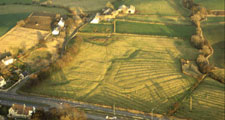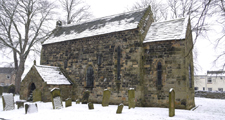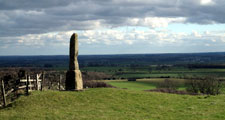Early Medieval
(C5-1066)
Angles, Saxons and Jutes from Denmark and northern Germany settled on the Durham Coast during the 5th Century displacing or assimilating the native Britons. By the end of the 6th Century the eastern lowlands of the county were densely settled. Most of the villages in these areas today have the names of Anglian villages and farms; -tun, -ham, -wick, and -worth. The uplands and fringes of the Pennines were less densely populated with scattered villages and seasonal stock farms separated by extensive tracts of open moor and woodland. Place names here refer to woodlands and clearings; -ley, -hyrst, -rydding and -wudu.
The area fell within the Anglian kingdom of Northumbria and much of the land came under the control of the monastic community of St Cuthbert. The Saxon legacy is often buried deep in the landscape as many of its features – villages, roads and territorial boundaries – have remained in continuous use to the present day. Of the few surviving Saxon buildings in the region, Escomb Church, is one of the finest examples of early Christian architecture in Northern Europe.



